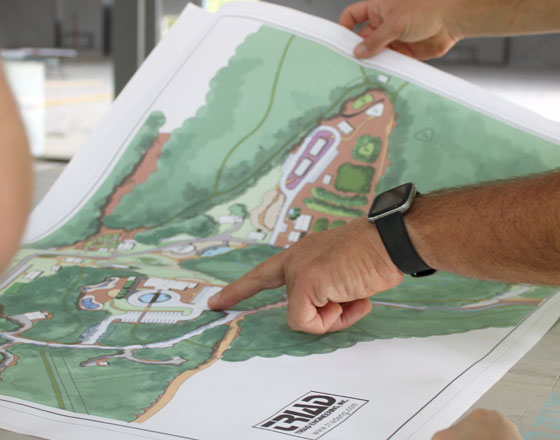50 Years in Site Design and Development – A Brief Recap, and Look Ahead
By: Corey Armstrong / Landscape Architect

Many things change over 50 years. This is most certainly true as professionals in site design and land development. Practitioners like civil engineers and landscape architects are bombarded with new construction innovations, building materials, software, equipment and tooling, terminology and catchy buzz words that flow out of the green industry, and concepts that blur or cross-over into other disciplines. Social and cultural landscapes are also complex and evolving networks, and are indeed inspired by, engrained in, or adaptive to the “landscapes” and “environments” we design and create. So… all things change over time then. Right?
Well, sort of…
Urban, rural, resilient, sustainable, interactive, gentrified, or natural landscapes offer various impressions, but don’t provide the same meaning to everyone. Whatever label you prefer to attach to a place, the landscape is everything around us. However, the landscape isn’t only physical-the buildings, the parks, the roads and trails that connect us to each other, and to our destinations. The landscape – natural or man-made, is a catalyst for much more than that, and that’s hardly changed at all. So…not all things change then?
Well, sort of…
As the race and pace of technology and its general impact on absolutely everything continues to increase, the landscape around us can, and should seem separate from techy gadgets, computer applications or any form of artificial intelligence. The actual environment is what we see in real-life, in real-time, before us through our very own eyes! How refreshing! Despite so many factors, the way we perceive our environment as a community, a family or individually has always been a very personal, influential and undeniable reality.
Therefore, the role of a professional site designer is as important now as it’s ever been. And as our roles as civil engineers and landscape architects continue to connect and provide safe, functional and practical solutions to destinations, the navigation to them, and the experiences within them, we should welcome a renewed sense of responsibility in how others interpret, experience and adapt their own lives accordingly. And though it’s difficult to imagine where technology will take us, or change the future, I’m confident that professional site designers will continue to help shape lives in meaningful ways for the next 50 years. So, for now, and for the sake of clarity we should remain optimistic, embrace and feel good that the more things change, the more they stay the same.


